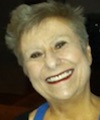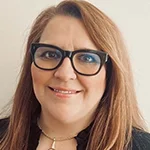 Jane Genova |
In 2017, the USC Annenberg Global Communications study found that 87 percent of communications professionals believe that by 2022, the words “public relations” won't adequately describe what their agencies will be doing.
In addition, 60 percent of marketing experts predict their functions and those of PR would more or less fuse.
Obviously, between now and 2022, a major shift could be happening in what has been known as “public relations
The public relations business is not alone in this. Technology, client expectations, and need for cost control are also disrupting how other professional services, such as accounting, law, and management consulting, identify themselves and do business.
Here’s a snapshot how the playing field could look by 2022.
Going beyond the technology per se. In itself, technology in just about every industry has become a blank check. Its value is created by how individual businesses apply it. Take banking’s ATM. Smaller institutions have snatched market share from the giants by introducing features such as dispensing exact change, global availability, and discounted fees.
AirPR software can do the same. Essentially, it measures the impact for earned, owned, and shared media placements. As the odwyerpr.com editorial staff reported:
“[That] is presented in the program’s dashboard. Details include trends over time,competitive analysis, and top performing messages and content.”
Firms can differentiate themselves from the pack by figuring out unique ways the software can assist in strategically planning, implementing, and course correcting client campaigns. In addition, they can develop discounted pricing for those kinds of assignments.
Cost savings made possible by technology could end retainer relationships and the billable hour.
Fragmenting into niches. The all-purpose general agency is likely to go the way of the department store. The large ones might break apart into boutiques representing only one industry such as finance, healthcare or technology. In themselves those lines of business have become more complex. Added on are the growing complexities of the global, national, state, and local environments in which they operate. Which allow transactions in cryptocurrency? Clients need experts who manage those specific problems daily. The O’Dwyer’s Directory of Public Relations Firms aleady sorts according to an agency’s specialization. Eventually that could be the only category.
Smashing through silos. The boundaries between areas of expertise, be they SEO, marketing, or media are disappearing. Announcing a new product simultaneously on Facebook, in establishment press, and at special event requires all those skills. Those in agencies can no longer think of themselves as the “writer for byline articles,” “SEO guru,” or “not the crisis expert.” Instead, the mindset likely will become multi-purpose and all players will have equal status. Among what held back the New York Timesin the transition to digital was having separate print and online newsrooms. Those silos not only prevented learning by osmosis. They created a caste system.
Re-thinking “experience.” Once considered a sacred word in the work world, the term “experience” already has taken on a negative connotation. Obviously, clients only want to pay for the level of expertise needed to get the assignment done right. Two years of experience could even be appropriate to manage a food-recall. But, just as important, “experience” could indicate “older,” that is, not as up on digital technology as a Millennial.
Of course, this reality brings up the issue of ageism. Older professionals will have to develop new elevator speeches. Instead of identifying themselves as “having 20 years’ experience in crisis communications,” they would cite their most recent accomplishment. Here is an example: “In the X company food recall I brought in blockchain experts. The source of contamination was identified in two days, not two weeks.”
Implementing total 24/7 responsiveness. The business of PR is becoming more like that of a media outlet than a retail bank with traditional workday hours. Not only do clients and prospects encounter emergencies at all hours. More companies have had to become on-demand. Also, more agencies are global. Team members will become easily available around the clock. In fact, shift schedules could become commonplace.
Those organization that navigates these disruptions will have to ask itself: Who are we? The concept “public relations” may be eliminated. So, could the professional category “marketing.” New terminology might have to be invented.
“What Color Is Your Parachute? 2018” has observed the breakdown in the work world when employers and employees began talking different languages. Employers only understood terms like “recent results.” Employees continued to use old-line terminology like “skills.” PR firms can head that off, ensuring service providers and clients/prospects share the same language about what is of value. Here is my new book, free to download, on outsmarting comfort zones – or the pull of the status quo.
***
Jane Genova (http://over-50.typepad.com) provides individual coaching, organizational audits, and ghostwriting of thought leadership content on ageism – [email protected].


 DJE Holdings, parent of Edelman and Zeno, launches RUTH as an independent shop named after Ruth Edelman, mental health advocate, wife and longtime business partner of Dan Edelman.
DJE Holdings, parent of Edelman and Zeno, launches RUTH as an independent shop named after Ruth Edelman, mental health advocate, wife and longtime business partner of Dan Edelman. New York City PR firms make up the largest slice of O'Dwyer's 147 firm overall ranking with 33 of 40 in the New York/New Jersey area either calling Manhattan their home or having a presence there.
New York City PR firms make up the largest slice of O'Dwyer's 147 firm overall ranking with 33 of 40 in the New York/New Jersey area either calling Manhattan their home or having a presence there. Subject Matter+Kivvit, which joined forces in May, has rebranded as Avoq, an integrated shop with more than 200 professionals in Washington, New York, Asbury Park (NJ), Miami and Chicago.
Subject Matter+Kivvit, which joined forces in May, has rebranded as Avoq, an integrated shop with more than 200 professionals in Washington, New York, Asbury Park (NJ), Miami and Chicago. While PR pros stationed at in-house comms. teams and those working for agencies share many of the same objectives, they also have markedly different top priorities, according to a recent report.
While PR pros stationed at in-house comms. teams and those working for agencies share many of the same objectives, they also have markedly different top priorities, according to a recent report. Edelman is cutting 240 employees or about four percent of its workforce to cope with the cooling down of the PR sector, according to a memo from CEO Richard Edelman.
Edelman is cutting 240 employees or about four percent of its workforce to cope with the cooling down of the PR sector, according to a memo from CEO Richard Edelman.


 Have a comment? Send it to
Have a comment? Send it to 
No comments have been submitted for this story yet.